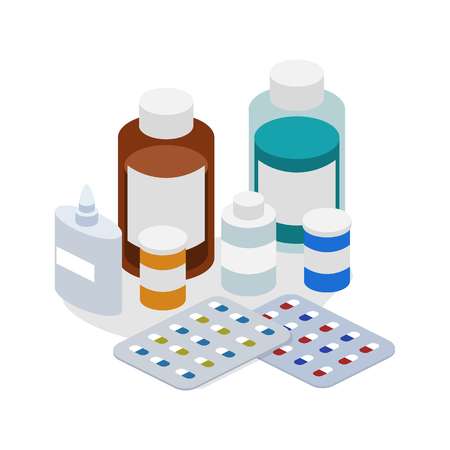



Uromax
Generic Name : Tamsulosin Hydrochloride
Brand Name : Uromax
Strength : 400 mcg
Price: 12 TK
Stock: YES
User for : Human
Note : If medicine quantity 1 = 1 Strip ( plz see the description)
Share in Social Media
Product Details
Unimed Unihealth Manufacturers Ltd.
Indications
Tamsulosin Hydrochloride is indicated for the treatment of functional symptoms of Benign Prostatic Hyperplasia (BPH).
Therapeutic Class
BPH/ Urinary retention/ Urinary incontinence
Pharmacology
Tamsulosin, a selective alpha1 adrenoceptor blocking agent, exhibits its selectivity for alpha1A adrenoceptors in human prostate. Blockade of these adrenoceptors can cause smooth muscle in the bladder neck and prostate to relax, resulting in an improvement in urine flow rate and a reduction in symptoms of BPH.
Absorption of Tamsulosin Hydrochloride capsules 0.4 mg is essentially complete (90%) following oral administration under fasting condition. The time to maximum concentration (Tmax) is reached by four to five hours under fasting conditions and by six to seven hours when administered with food. Tamsulosin Hydrochloride is extremely bound to human plasma protein (94% to 99%). Tamsulosin Hydrochloride is extensively metabolized by cytochrome P 450 enzymes in the liver and less than 10% of the dose is excreted in urine as unchanged form. Following intravenous or oral administration of an immediate-release formulation, the elimination half-life of Tamsulosin Hydrochloride in plasma ranges from five to seven hours. Because of the absorption rate-controlled pharmacokinetics with capsules, the apparent half-life of the Tamsulosin Hydrochloride is approximately 9 to 13 hours in healthy volunteers and 14 to 15 hours in the target population.
Absorption of Tamsulosin Hydrochloride capsules 0.4 mg is essentially complete (90%) following oral administration under fasting condition. The time to maximum concentration (Tmax) is reached by four to five hours under fasting conditions and by six to seven hours when administered with food. Tamsulosin Hydrochloride is extremely bound to human plasma protein (94% to 99%). Tamsulosin Hydrochloride is extensively metabolized by cytochrome P 450 enzymes in the liver and less than 10% of the dose is excreted in urine as unchanged form. Following intravenous or oral administration of an immediate-release formulation, the elimination half-life of Tamsulosin Hydrochloride in plasma ranges from five to seven hours. Because of the absorption rate-controlled pharmacokinetics with capsules, the apparent half-life of the Tamsulosin Hydrochloride is approximately 9 to 13 hours in healthy volunteers and 14 to 15 hours in the target population.
Dosage & Administration
Tamsulosin Hydrochloride 0.4 mg (one capsule) daily, to be taken after meal at night. The dose may be increased after 2 to 4 weeks, if necessary, to Tamsulosin Hydrochloride 0.8 mg (two capsules) once daily. If Tamsulosin Hydrochloride administration is discontinued or interrupted for several days at either the 0.4 mg or 0.8 mg dose, therapy should be started again with the Tamsulosin Hydrochloride 0.4 mg (one capsule) once daily dose. The capsule should be swallowed whole with a glass of water (about 150 ml) in the standing or sitting position. The capsule should not be crunched or chewed, as this will interfere with the modified release of the active ingredient.
Interaction
Concurrent administration of other alfa1-adrenoceptor antagonists could lead to hypotensive effects. No interactions have been seen when Tamsulosin was given concomitantly with either atenolol, enalapril or nifedipine. Concomitant cimetidine brings about a rise and frusemide a fall in plasma levels of Tamsulosin, but as levels remain within the normal range posology need not be changed. No interactions at the level of hepatic metabolism have been seen during in vitro studies with liver microsomal fractions (representative of the cytochrome P450-linked drug-metabolizing enzyme system), involving amitriptyline, salbutamol, glibenclamide, and finasteride. Diclofenac and warfarin, however, may increase the elimination rate of Tamsulosin.
Contraindications
Tamsulosin is contraindicated in patients with known hypersensitivity to Tamsulosin.
Side Effects
The following adverse reactions have been reported during the use of Tamsulosin: dizziness, abnormal ejaculation and; less frequently headache, asthenia, postural hypotension and palpitations.
Pregnancy & Lactation
Use of Tamsulosin in pregnancy and lactation is not recommended.
Precautions & Warnings
Rarely, transient postural symptoms have occurred during orthostatic provocation testing after the first dose. Use in patients with micturition syncope is not advised.
Effects on ability to drive and use machines: No data is available on whether Tamsulosin adversely affects the ability to drive or operate machines. However, in this respect, patients should be aware of the fact that dizziness can occur.
Effects on ability to drive and use machines: No data is available on whether Tamsulosin adversely affects the ability to drive or operate machines. However, in this respect, patients should be aware of the fact that dizziness can occur.
Overdose Effects
No case of acute overdosage has been reported. However, acute hypotension is likely to occur after overdosage in which case cardiovascular support should be given. Blood pressure can be restored and the heart rate brought back to normal by lying the patient down. If this does not help then volume expanders, and when necessary, vasopressors could be employed. Renal function should be monitored and general supportive measures applied. Dialysis is unlikely to be of help as Tamsulosin is very highly bound to plasma proteins. Measures, such as emesis, can be taken to impede absorption. When large quantities are involved, gastric lavage can be applied and activated charcoal and an osmotic laxative, such as sodium sulphate, can be administered.
RELATED PRODUCTS






